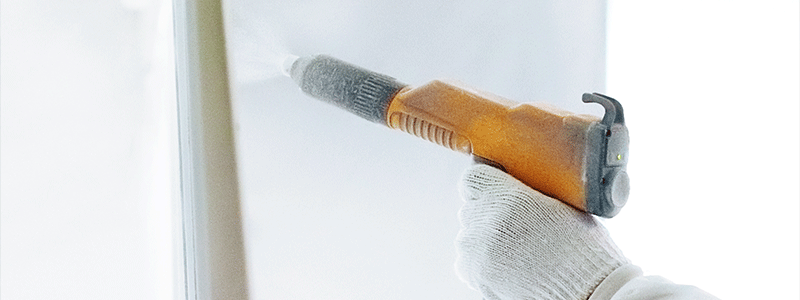There are many ways galvanized steel, or the effect of galvanized steel, can be created. There are chemical processes, processes which produce galvanized steel by dipping it in hot zinc, and there are processes call cold galvanizing. Using zinc-rich paint is what is referred to as cold galvanizing. This is when a zinc-rich paint is merely applied to steel much in the way any other paint would be applied to any other surface. Though it may not be quite as effective as hot dip galvanizing or electro galvanizing, zinc rich paint comes very close. It provides all of the anti-corrosive properties of galvanized steel on a smaller, simpler scale.
To apply zinc paint to a surface, the surface must first be sand blasted to near white metal. This helps insure that the paint coating will stick to the surface without many other foreign bodies corrupting it. The zinc paint can then be applied. Zinc-rich paint is produced when zinc dust is added to a suitable carrier and continuously agitated to produce a suitable coating which will adhere to the surface of the metal. The paint can then be brushed or sprayed onto steel while keeping the paint constantly agitated to prevent the zinc dust from settling in the carrier.
Zinc paints can either come in organic or inorganic forms but are both applied in the same way. They are applied in the same way as any other paint coatings, but zinc coatings go through a process which binds the zinc to the steel. This means the concentration of zinc in the paint must be high enough for this reaction to occur. While inorganic and organic zinc paints are applied in the same way, inorganic paints form a stronger bond than organic paints and have a better resistance to the elements. Inorganic zinc paints are far more resistant to corrosion, clean up easier, and are easier to weld if needed.

